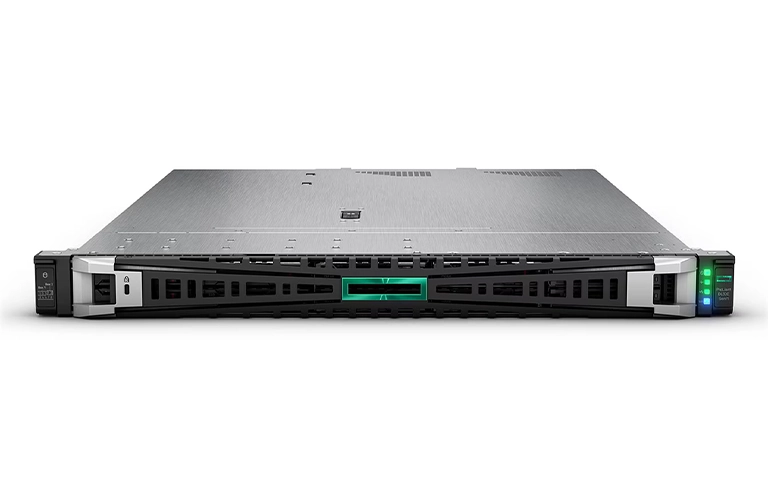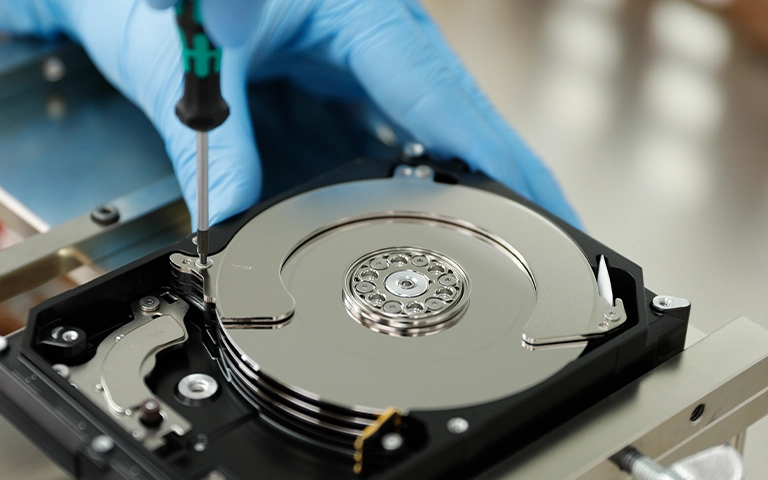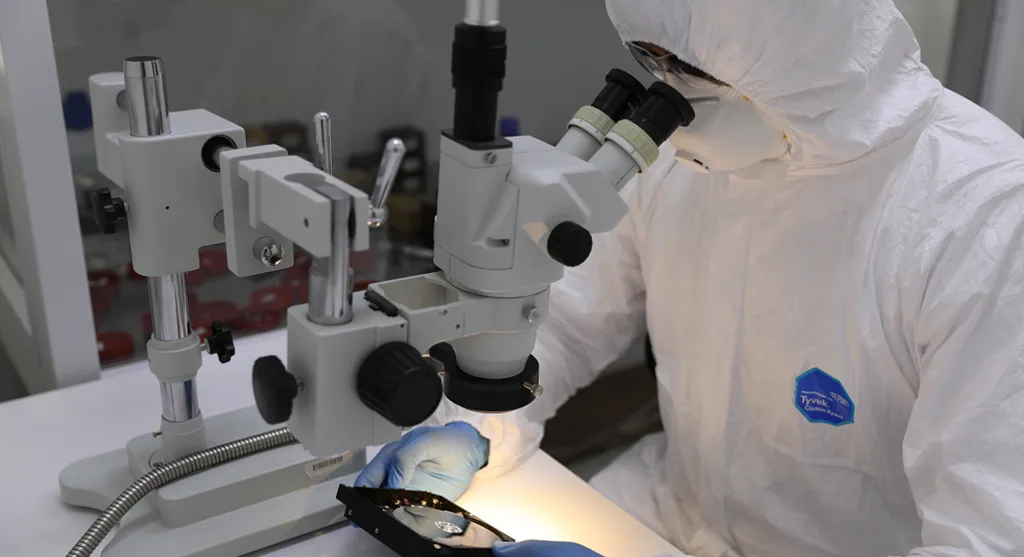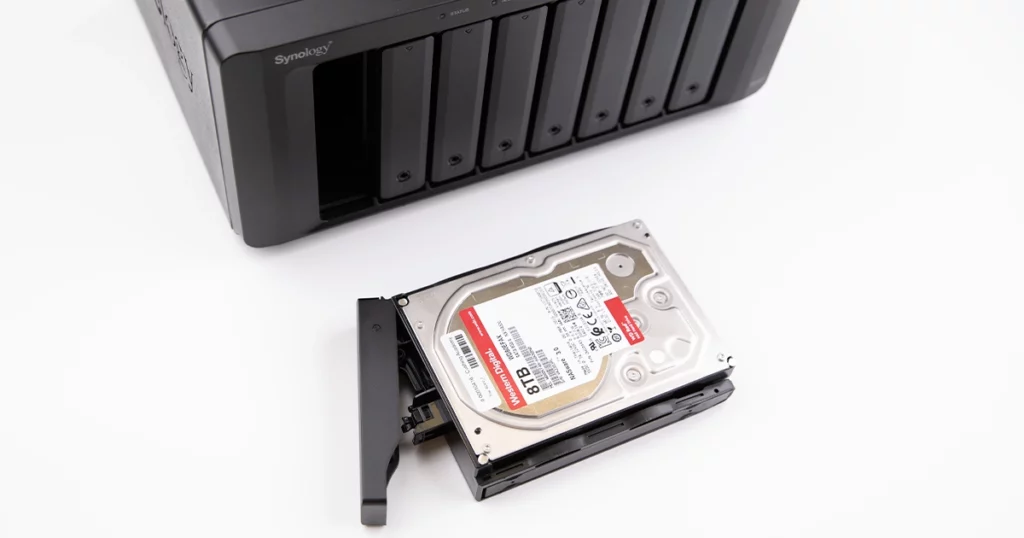When a server experiences physical damage, even a reliable configuration like RAID 5 can become unstable.
Recently, our engineers at RAID Recovery Services received an HP ProLiant ML380 G6 Server for emergency data recovery. The device had been accidentally dropped, and all files stored on the RAID 5 array became inaccessible.
The client, a business owner managing multiple branches, relied on this server for shared network access and centralized file storage. After unsuccessful attempts to reinitialize the system, he decided to send the device to our lab for professional evaluation and recovery.

Device Overview and Failure Description
The HP ProLiant ML380 G6 Server was configured with a RAID 5 array consisting of three enterprise-grade hard drives. This setup balanced performance with fault tolerance, allowing the system to continue functioning even if one drive failed.
However, after the server was accidentally dropped, the RAID array stopped responding. The client attempted to reinitialize the RAID 5 configuration, but the system would not boot, and data remained inaccessible. The physical impact caused mechanical damage to the drives, preventing normal startup and data access.
For readers unfamiliar with this configuration, you can learn more about RAID 5 principles in our detailed guide on What Is RAID 5.
Initial Evaluation and Cleanroom Inspection
Once the server and drives arrived at our lab, our engineers began the initial evaluation to assess the extent of the physical damage. Since the failure was caused by mechanical shock, the recovery required a controlled environment and careful inspection.
All three hard drives were opened and examined inside our ISO Certified Class 10 Cleanroom, where even microscopic dust particles are filtered out to protect sensitive components. The evaluation included:
Physical Condition Check: Identifying visible damage to spindles, platters, and read/write heads.
Electronic Integrity Test: Assessing PCB functionality and power delivery.
Head Alignment Verification: Ensuring that drive heads had not contacted platter surfaces.
The results showed that two out of three drives had suffered mechanical failures, while one remained functional and could assist in array reconstruction.

RAID 5 Data Recovery Process
With the failure causes identified, our engineers developed a recovery plan focused on restoring the data from the damaged drives and rebuilding the RAID 5 array. The process included several critical steps:
The spindle motor on the first drive was replaced temporarily, allowing engineers to spin up the platters in a donor assembly. This made it possible to image the drive and recover all readable data.
The functional drive and the one with minor head damage were imaged sector by sector using specialized equipment. This ensured a complete copy of all accessible information without further physical stress.
After imaging, the array was logically rebuilt using XOR checksums, which allowed the engineers to restore missing data from parity information.
The final step involved validating file structures, comparing checksums, and ensuring that all user data was accurate and fully accessible.
For additional insights into array restoration, see Rebuild RAID 1 After Drive Failure.

Recovery Results and Client Verification
After the RAID 5 array was reconstructed, all critical files were successfully restored. The recovered data included business documents, shared network files, and system configurations that were essential for the client’s operations.
The client participated in a remote verification session to confirm data accessibility and integrity. Once verified, all recovered files were securely transferred to new storage media and delivered to the client. The business was able to resume normal activity without data loss or further downtime.
For a similar enterprise recovery case, explore Dell PowerEdge 440 RAID 5 Hyper-V Recovery.
Fast turnaround times for business-critical data
Lessons Learned and Prevention Tips
This case demonstrates how physical impact can instantly disrupt a functioning RAID system, even when redundancy is present. To prevent similar incidents and reduce the risk of data loss, consider the following best practices:
Avoid moving or handling servers while operating. Physical shock can cause spindle or head damage.
Use vibration-resistant mounts or enclosures. These reduce the risk of internal component misalignment.
Perform regular RAID health checks. Monitor array status and drive performance to detect early signs of failure.
Maintain up-to-date backups. Off-site or cloud backups ensure data remains secure even after unexpected damage.
For more insights into array reliability and maintenance, see our detailed guide on RAID Failure Rate.

Professional RAID 5 Recovery Services
Recovering data from a failed RAID 5 system requires specialized tools, experience, and a controlled environment.
In this case, careful handling of the damaged drives and precise reconstruction of parity data allowed our engineers to restore all critical files successfully.
If your RAID 5 server or HP ProLiant system has suffered physical or logical damage, trust RAID Recovery Services for expert assistance. Our engineers handle complex RAID failures involving mechanical damage, controller issues, and parity corruption.
For more information on RAID configurations and recovery methods, visit RAID 5 vs RAID 6.
Trust the experts with proven results
Frequently Asked Questions
What causes RAID 5 failure in HP ProLiant servers?
RAID 5 arrays can fail due to simultaneous drive damage, controller malfunction, or physical impact. In this case, the server was dropped during operation, causing spindle and head damage to two of the drives.
Can RAID 5 data be recovered if multiple drives fail?
Yes. Even if two drives are damaged, recovery is often possible when at least partial data from each disk is accessible. Using parity reconstruction, engineers can rebuild missing information and restore the array.
Why is a cleanroom environment necessary for RAID recovery?
Opening hard drives outside a cleanroom exposes them to dust and contaminants that can permanently damage platters. Professional labs use ISO Certified Class 10 Cleanrooms to ensure safe inspection and repair.
How long does a RAID 5 recovery take?
Recovery time depends on the level of physical damage and drive condition. Most RAID 5 recoveries at RAID Recovery Services are completed within 5 to 7 business days after evaluation.
How can I protect my RAID 5 server from physical damage?
Keep the server mounted on a stable surface, avoid moving it during operation, and use vibration-resistant hardware. Regularly back up your data to prevent downtime if a physical failure occurs.